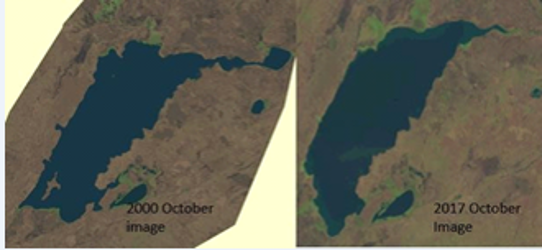Background
Lake Mweru Wantipa in northern Zambia experienced reduction in water levels and reduction in biodiversity evidenced from low fish catches as well as scarcity of certain fish species.
The reasons for the drawdown were not known. As the lake and its ecosystem plays a large role for the economic security of the people living in settlements by the lake, it was imperative that the reasons for the drawdown in levels be known, and if possible, remedial actions be sought. The main hypothesis was that the decrease in water levels was caused by climate change due to changes in precipitation patterns and air temperature increase causing higher evaporation rates over a prolonged period. The project sought a scientific way to explain the phenomenon.
Description
The methods used in the project were as follows:
1. Reconnaissance survey
Fifteen households were selected and answers were used to gain historic information about the lake and the social economic activities around it.
2. Water balance
This was used to determine the water loss on the lake. Since there is no physical outlet, loss occurs only via evaporation and seepage. Discharge into the lake from all tributaries was measured and summed up. The surface boundary of the lake was determined through GIS analysis.
Water level change was obtained from a staff gauge station at an interval of 48 hours. Water loss was then calculated using the water balance equitation with respect to the lake’s characteristics.
3. Water loss over a period of time
Satellite imagery (LandSat7) was used to compare the size and shape of the lake in October 2000 and October 2017, see Fig. 1.
The overall analysis of the results showed that anthropogenic activities led to the blockage of water ways transferring water in the tributaries. The blockage was due to siltation caused by erosion as a result of deforestation of the riparian zones and wrong fishing methods.

Impact
The project identified and informed decision makers about the causes of lake water level decrease and suggested restoration measures in the form of dredging water ways. Even if the causes were not primarily driven by climate change, the dredging the waterways will provide improvement of lake water levels and biodiversity, which will favour the communities as it will limit the potential impact of future climate change effects.
Lessons learned
Protection of Water Resources requires an integrated approach where all players affected must be identified and brought together to play their part.´ One needs to have enough information for trend analysis in order to be sure there is a disparity in terms of quantities between the past and present scenarios.